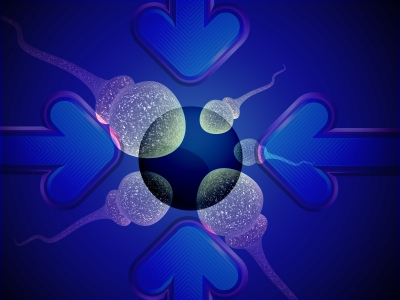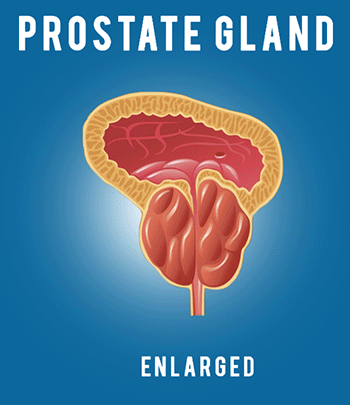Introduction – Prostate
Introduction – Prostate

Image courtesy of sscreations at FreeDigitalPhotos.net
ANATOMY
The prostate is a variable sized gland located in the male pelvis, usually the size of a walnut measuring 3-4 centimeters long by 3-5 centimeters in width. On average, the gland weighs about 20 grams. It is found behind the pubic bone, in front of the rectum, and below the bladder, surrounded by the pelvic muscles. The prostate surrounds the urethra which carries urine from the bladder to the penis and travels in the center of the gland. The seminal vesicles attach to the prostate and produce material that mixes with prostate fluid to form semen. The tubes from the testicles carry sperm to the prostate where the sperm are mixed with the prostate and seminal vesicle fluid. This fluid is then ejaculated during orgasm by a connection to the urethra called the ejaculatory ducts.
Introduction – Prostate
For many years the prostate was thought to exist in “lobes”, however we now refer to the prostate as having various concentric zones. These zones are termed: anterior fibromuscular stroma, peripheral zone, central zone, and transition zone. It is the peripheral zone of the prostate that a doctor can feel by a finger in the rectum. Almost all prostate cancers start in the peripheral zone, thus the importance of the rectal examination. The transition zone generally accounts for less than 5% of the total prostate volume, however it is the exclusive site for the development of benign prostatic hyperplasia (BPH) and may therefore become massive. The central zone is involved with the connection of the seminal vesicles to the prostate and is rarely associated with any disease process. The anterior fibromuscular stroma is the anchoring point of the urethral sphincter that controls urination; it does not have any glands and therefore cancer or enlargement does not develop here.
CELL TYPES
The prostate is made up of several different cell types. Epithelial cells make up the glandular portion of the prostate and stromal cells make up the surrounding muscle and connective tissues. Cancer of the prostate develops from the epithelial cells, but the interaction with the stromal cells is very important to the behavior and characteristics of the cancer. BPH develops from the complex interactions between epithelial and stromal cells. Poorly understood communications between these two very different cell types are believed to dramatically influence the development of various prostatic diseases. Testosterone and the hormonal systems interaction with these cell lines is an extremely active area of cancer research.
PROSTATE PRODUCTS
Normal ejaculation produces about 3 cc of semen. The sperm make up less than 1 percent of the volume, with the seminal vesicles and prostate producing about 95% of the total volume. The ejaculate is very rich in unusually high concentrations of potassium, zinc, citric acid, fructose, and prostaglandins. Many other unusual substances are also found in the semen. Oral intake of zinc does not alter zinc levels in prostatic fluid. One idea as to why zinc is found at such high levels in the prostate is that zinc may provide protection from infection of the prostate. The significance of many components of prostate fluid is unknown, but generally thought to be involved with reproduction. Thus the prostate is essentially an organ for reproduction. Unfortunately, its proximity and relationship to the bladder and urethra causes major health problems for men long after the need for reproduction has passed.
PROSTATE PROBLEMS
Prostatitis is simply the inflammation or infection of the prostate gland. The symptoms are uncomfortable at best; more often they are extremely painful and can also be dangerous. Symptoms include pain and swelling in the prostate, fever, chills, pain in the lower back, burning or painful urination, a need to urinate frequently during the night, dribbling, fatigue and body aches, and pain with ejaculation.
Unlike benign prostatic hyperplasia (BPH) often referred to as simply “an enlarged prostate,” prostatitis can strike any male, young or old. Prostatitis can be either acute or chronic, bacterial or nonbacterial.
Acute prostatitis is likely to occur intermittently. It can cause fever, bladder discomfort frequent and burning urination, and blood or pus in the urine.
Chronic prostatitis is ongoing and usually worsens with time. Its symptoms may include frequent urination, blood in the urine, a burning sensation, discomfort in the prostate area and lower back, painful ejaculation and even impotence.
Bacterial prostatitis can be caused by infectious bacteria that migrate from other parts of the body and by sexually transmitted disease organisms, especially through sex with multiple partners. Nonbacterial prostatitis is the most common form of prostatitis, but also the least understood.
Benign Prostatic Hyperplasia (BPH):
To begin with, “benign” means not malignant. “Prostatic” simply means prostate. And “hyperplasia” means excessive formation of cells. So when your doctor tells you “you suffer from benign prostatic hyperplasia or BPH,” what he’s really telling you is you have a nonmalignant enlarged prostate.
Each year, as many as 12 million American men suffer from symptoms of BPH that are so agonizing they are forced to seek medical treatment. In fact, in America today, four out of five American men are likely to develop prostate problems during their lifetime.
The most common symptoms of BPH are a frequent need to urinate, a frustrating inability to completely empty the bladder, a weak urine stream, and painful or bloody urination. For a more detailed list of the symptoms associated with an enlarged prostate, click here.
Leading scientists agree that the primary cause of BPH is a hormone called dihydrotestosterone or DHT for short. As you age (usually over 45), your body converts more testosterone into the more potent DHT. The result of this increase in DHT is an excessive overgrowth of prostate cells, resulting in an enlarged prostate gland that constricts the urethra and interferes with normal urinary functioning.
DHT is also believed to cause a host of other health problems, including male pattern baldness.
IF YOU ANSWER YES TO JUST ONE OF THESE QUESTIONS, IT IS LIKELY YOU HAVE A PROSTATE PROBLEM AND SHOULD SEE YOUR DOCTOR OR SEEK TREATMENT.
- Do you get up more than once or twice a night to urinate?
- Do you often have sudden, uncontrollable urges to urinate?
- Do you have a frequent need to urinate?
- Is your urine stream slow or dribbling?
- Do you sometimes need to urinate, but are unable to?
- Do you experience burning or pain when you are urinating?
- Do you have blood in your urine?
- Do you have pain in your lower back, pelvis or upper thighs?
- Are you experiencing reduced sexual ability, painful orgasm, impotence?
- Are you feeling discomfort during intercourse?
PROSTATE CANCER
Prostate cancer kills 41,000 men in the US every year. Prostate cancer is now the most frequently diagnosed cancer among American males. It is estimated that over 9 million men currently have some form of prostate cancer in the United States. This year, 317,000 cases will be diagnosed and
41,000 men will die from prostate cancer in the United States alone. Unfortunately, the numbers are only expected to worsen: over the next 20 years, the number of men diagnosed with prostate cancer will triple, and the number of men who will suffer and die from this terrible disease will
double. Prostate cancer is a ruthless and manifestly complicated adversary.
Benign Prostate Hyperplasia (BHP) is a condition where the prostate enlarges, but does not lead to cancer. According to Dr. Holt, BHP affects more than half of all men over the age of 40, and 60% of all men over the age of 50. Although this condition is not carcinogenic, it is nonetheless associated with sexual dysfunction and difficulty in urination. As a matter of fact, prostatic health is required for satisfactory male sexual function. It is therefore of benefit if this enlargement of the prostate
can be prevented.
The actual cause of benign prostatic hyperplasia (BPH) is unknown. However, it has been noted that eunuchs (men who have had their testicles destroyed or removed) do not develop BPH. Furthermore, after castration, benign prostatic hyperplasia has been observed to regress. Since the presence of normally functioning testicles appears to be necessary for the development of BPH, it is supposed that the tumor tissue uses the androgenic (male) hormones differently than normal prostate tissue does. Although the tumor is benign (not cancerous), progressive growth of the tumor may cause significant obstruction of the urethra and interfere with the normal flow
of urine. The incidence of BPH increases with advancing age. BPH is so common, that it has been said, “All men will have benign prostatic hyperplasia if they live long enough!” A small amount of BPH is present in 80% of men over 40 years old and over 95% of men 80 years old. No risk
factors have been identified other than having normally functioning testicles.
CONVENTIONAL TREATMENTS
Most medical doctors treat an enlarged prostate (BPH) with drugs or surgery. In fact, every year there are over 400,000 operations performed in the United States to treat BPH. Surgery can reduce the size of the prostate, but it can also cause such negative side effects as impotence and
incontinence. What’s worse, is that surgery is not necessarily a long-term solution, and may have to be repeated in a few years. Surgery addresses the symptoms of an enlarged prostate, but does nothing about the cause, often necessitating further treatment as the prostate gland continues to enlarge.
There are many drugs in use today that shrink an enlarged prostate gland, but like surgery, they too can have undesirable and dangerous side effects, including decreased libido, premature ejaculation and impotence. One of these drugs can even cause severe birth defects.
Proscar
The most widely used of these is finasteride, which sells under the brand name of Proscar. It has been shown to be moderately successful in reducing prostate size in some men and in addressing some of the urinary symptoms associated with BPH. However, it can take as long as six months before it shows results, and the drug has negative side-effects that certainly give
any thinking man pause. Among others, it has the potential to decrease libido, cause premature ejaculation and impotence. Not results any man who values his love life cares to contemplate!
There are even more alarming aspects to this drug, both for men and for women. It can cause birth defects in pregnant women who come in contact with the drug or possibly even with the sperm of a man who has taken Proscar. It can also artificially lower a man’s PSA levels by as much as 60
percent. This is very important to note, because it can interfere with the results of a PSA test in detecting prostate cancer. In many men, Proscar may not be effective at all. Proscar is designed to shrink greatly expanded glandular tissue of the prostate. However, not all BPH problems come from
expansion of glandular tissue. Some men have prostate glands that are normal in size, but because the smooth-muscle tissue in their prostates has begun to contract around the urethra, they too suffer from painful BPH symptoms.
Hytrin
Another category of drugs called alpha-blockers is prescribed in such cases. They act by relaxing the smooth muscle of the prostate gland and neck of the bladder to improve urine flow. One such drug, terazosin, is marketed under the name Hytrin. Unfortunately, alpha-blockers can also have
undesirable side effects, including headaches, fatigue, nasal congestion, dizziness and syncope-a sudden loss of consciousness.
ALTERNATIVE REMEDIES AND CURES
More and more Doctors worldwide are starting to treat prostate problems with herbs. If you’re interested in natural alternatives to prescription drugs, there are many natural prostate healing herbs that have been scientifically proven to work as effectively as these prescription drugs, but without any of the negative side effects. In fact, one prostate remedy (saw palmetto) has been proven in clinical studies to be more effective than finasteride.



